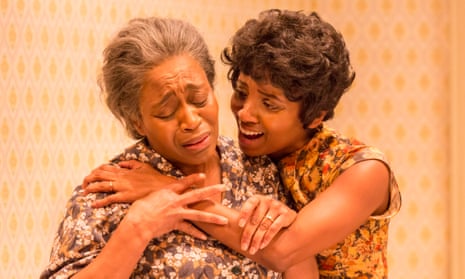Lorraine Hansberry (1930-65) is the first black woman to have had a play produced on Broadway – in 1959. How many black women have had plays on main stages in major cities since? The power and craft of the writing make A Raisin in the Sun as moving today as it was then. Entrenched attitudes about race make the challenges its characters face still relevant (the Oscars fiasco is just one small instance).
In a slum in Chicago’s South Side, fifth and sixth generations of an African American family dream of escape. A grandmother and her daughter-in-law want better for their children; a son/husband/father chafes against his low-paid, dead-end job; a marriage cracks under financial pressures; a daughter/sister aims to become a doctor; a child wants to play. Will their dreams, in the words of black American poet Langston Hughes (1902-67), “dry up/ like a raisin in the sun.../ Or [will they] explode”?
As Hansberry once said: “In order to create the universal, you must pay very great attention to the specific”, and this drama resonates with other lives similarly cramped by poverty (Irish writer Seán O’Casey’s Dublin-set Juno and the Paycock was a partial influence). The main focus, though, is firmly and deliberately on black experience. This, Hansberry said, is “a Negro play before it is anything else”.
Four visitors to the family’s flat site the domestic situation within wider national and economic perspectives: the young Nigerian student, interrogating notions of identity and moral purpose; the well-off, African American student, wondering what ideas have to do with education; the fellow dupe, scammed out of savings; the white representative of the housing scheme “welcome committee”, sent to buy this unwelcome family out of their hoped-for new home.
Under Dawn Walton’s direction, this strong ensemble compellingly conveys the emotional turmoil of a family under pressure, although a too-slack tempo occasionally cushions the punch of the drama. What this co-production (from Sheffield’s Crucible, Coventry’s Belgrade and Eclipse theatre) draws out clearly is the main challenge to the characters – to change the world, starting with themselves. This is also Hansberry’s challenge to her audience. Can we do it?

Comments (…)
Sign in or create your Guardian account to join the discussion